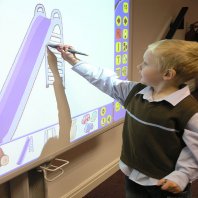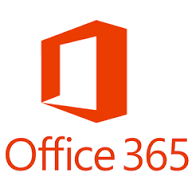 What are the barriers to “more use of edtech” in schools? A recent British Educational Suppliers Association (BESA) survey, as recently reported in the TES, suggested that budgets and “teachers’ unwillingness” were two of the main barriers identified by the survey. But was the right question being asked?
What are the barriers to “more use of edtech” in schools? A recent British Educational Suppliers Association (BESA) survey, as recently reported in the TES, suggested that budgets and “teachers’ unwillingness” were two of the main barriers identified by the survey. But was the right question being asked?
Firstly, looking at barriers to using “more” EdTech suggests that we don’t have enough and therefore should use more. This is a rather simplistic viewpoint as it suggests that the volume of EdTech in use is the key factor we should be seeking to address. In my view it isn’t. We should be seeking to use technology effectively and where appropriate. As Mike Sharples (@sharplm) recently commented, “technology alone will not transform education. Focus on pedagogy with new technology, not just the technology.”
The wide scale deployment of interactive whiteboards to schools can be considered as having increased the EdTech in education however I would challenge anyone to prove that it was effective. It didn’t improve outcomes. It didn’t support students in learning in new ways or improve their access to learning materials. It didn’t empower teachers to re-imagine the learning experience. In my view it simply allowed teachers to do what they always had been doing with a whiteboard/blackboard but using a digital surface instead, and at significant cost.
Taking the issue of budget into consideration, is it any wonder that school leaders would choose not to invest in EdTech where they can see limited added value from significant investment and where investment in other areas may show more reliable predictors of effectiveness or return on investment. If budgets were less strained maybe the situation would be different. As a result of this is it also therefore any small wonder that they would report that lack of budget as a reason for not investing, having themselves had to prioritise their spending.
Sticking with interactive whiteboards, the deployment of them was often to whole schools or departments. This approach to “more” is better fails to take into account different subject, teacher, student, topic, lesson, etc needs. It is a one shape fits all approach. What motivation does a teacher have to learn how best to use this new classroom technology given it has been foisted upon them. Teachers, due to not understanding the technology or having time to experiment, may also be unable to identify appropriate uses within their classroom and teaching for this new device. Given the lack of intrinsic motivation and perceived appropriateness of the technology is it any wonder that “teachers’ unwillingness” to make use of more EdTech might be perceived and reported by schools.
In looking at EdTech use in schools we need to adopt a more nuanced approach. It isn’t about using more Edtech. It should be about considering the different needs of teachers and students and allowing them to experiment and use solutions which fit these needs. From this, best practice can be identified and shared, and approaches can be regularly reviewed and revised to maximise their impact. I should note that an open, supportive culture and warm, friendly organisational climate is key to enabling this.
I also wonder about some teacher’s perception of what “good” use of EdTech looks like. Social media gives us plenty of examples of exemplary teaching using EdTech however this often comes from teachers who have got to this point from long periods of trial, error and practice which isn’t evident from social media postings. Also, the posts generally focus on the good, may be staged for marketing purposes for the school, or may be biased or divorced from the real world in other ways. EdTech doesn’t necessarily have to be a complex all singing and dancing affair or something worthy of a photo shoot and full page spread in an educational magazine. Good initial use of EdTech might be a simple and limited action relating to a specific part of a lesson. It could be simply to make use of an application such as Microsoft Teams or Showbie. From here it can built upon. Additionally, good use of EdTech seldom comes about without significant time, effort and experimentation. It is also worth noting that technology is always changing and new uses for existing technologies can always be found and therefore the seeking of improvement is never ending. This is a bit like teaching in general where there is always room to build upon practice with each new lesson, topic, class or academic year.
I think back to a presentation I gave in Dubai some years ago in which I identified what I believed at the time to be the factors I thought were key to Technology use in schools. Teacher motivation, confidence and training were some of the factors I listed and I continue to believe these are key although I think my view as to training is now broader than it was then. Training in my eyes now includes using social media, such as twitter, peer discussion and planning, experimenting and traditional training sessions. A key issue supporting these three factors is the culture and climate within a school. Open and supportive school cultures promote sharing of ideas and allow for trial and error to occur.
It is with this in mind I wonder whether a better question would have been: What are the barriers to supporting teachers to use Edtech in my school?
 Starting with gravity sketch, the first thing I found was that the app seems to be very powerful and with that comes a complex set of controls. This is an app you would need to spend some time with to properly get to grips with it before being able to confidently use it. I found myself quickly able to draw various shapes and models reasonably easily however I think trying to make a larger product from these shapes would take me a greater among of time. I particularly like the tool that allowed me to extrude a shape. I found myself quickly making the body for chess pieces, something which isn’t quite as easy to do when you are limited to primitive shapes as you are in some other apps I have tried. I can see this app having great potential in Design Technology lessons in particular.
Starting with gravity sketch, the first thing I found was that the app seems to be very powerful and with that comes a complex set of controls. This is an app you would need to spend some time with to properly get to grips with it before being able to confidently use it. I found myself quickly able to draw various shapes and models reasonably easily however I think trying to make a larger product from these shapes would take me a greater among of time. I particularly like the tool that allowed me to extrude a shape. I found myself quickly making the body for chess pieces, something which isn’t quite as easy to do when you are limited to primitive shapes as you are in some other apps I have tried. I can see this app having great potential in Design Technology lessons in particular. Masterpiece VR, I felt, wasn’t quite as powerful in terms of the tools available when compared with Gravity sketch however as a result it has an easier user interface to get to grips with. I was quickly working with virtual clay and making a sculpture. I could easily edit my sculpture cutting sections away or moulding areas to suit my needs much in the same way I would envisage you would work with real clay. Note: I have little experience of working with clay sculptures so I may be totally wrong on that point. Now I do not attest to being an artist in any shape or form, however I was easily able to create the start of a basic sculpture. As such I believe this app could easily be used by students in art lessons to develop much more impressive creations than anything I might be able to achieve. This is definitely an app where experimentation could be encouraged without the need for significant training in advance.
Masterpiece VR, I felt, wasn’t quite as powerful in terms of the tools available when compared with Gravity sketch however as a result it has an easier user interface to get to grips with. I was quickly working with virtual clay and making a sculpture. I could easily edit my sculpture cutting sections away or moulding areas to suit my needs much in the same way I would envisage you would work with real clay. Note: I have little experience of working with clay sculptures so I may be totally wrong on that point. Now I do not attest to being an artist in any shape or form, however I was easily able to create the start of a basic sculpture. As such I believe this app could easily be used by students in art lessons to develop much more impressive creations than anything I might be able to achieve. This is definitely an app where experimentation could be encouraged without the need for significant training in advance.

 What are the barriers to “more use of edtech” in schools? A recent British Educational Suppliers Association (BESA) survey, as recently reported in the
What are the barriers to “more use of edtech” in schools? A recent British Educational Suppliers Association (BESA) survey, as recently reported in the  Am sat on the train as I write this returning home from BETT 2019. Last year I didn’t manage to attend however this year I made an effort and decided to make my way down to the London ExCel on the Saturday. So what were my impressions and thoughts?
Am sat on the train as I write this returning home from BETT 2019. Last year I didn’t manage to attend however this year I made an effort and decided to make my way down to the London ExCel on the Saturday. So what were my impressions and thoughts?
 When I first trained as a teacher the main teaching aid was either an overhead projector or more commonly a roller blackboard. I remember taking an LCD Panel to a school during school placement visits as a trainee teacher. This device sat on top of a OHP and was connected to a laptop, allowing me to project whatever I had on my laptop screen. The staff loved this new piece of tech as did the students. This device was the precursor to the now common data projector which combines the OHP, and its light source, with the LCD Panel, into a single device.
When I first trained as a teacher the main teaching aid was either an overhead projector or more commonly a roller blackboard. I remember taking an LCD Panel to a school during school placement visits as a trainee teacher. This device sat on top of a OHP and was connected to a laptop, allowing me to project whatever I had on my laptop screen. The staff loved this new piece of tech as did the students. This device was the precursor to the now common data projector which combines the OHP, and its light source, with the LCD Panel, into a single device. I recently read a post in the Telegraph entitled “
I recently read a post in the Telegraph entitled “ At my school we have recently been working towards the implementation and roll out of Office 365 across the school and in doing so it has raised some interesting questions in relation to the various platforms and solutions which are available for use in the classroom.
At my school we have recently been working towards the implementation and roll out of Office 365 across the school and in doing so it has raised some interesting questions in relation to the various platforms and solutions which are available for use in the classroom. It has been reported that IT budgets will be subject to a squeeze resulting from the Brexit decision and for those who have bought IT items recently this has already become evident. Prices of Apple devices for example have already seen an increase. I count myself lucky that we updated our iPad fleet just before the Brexit vote as had we delayed we might now see a bill thousands of pounds more expensive than the cost we actually paid.
It has been reported that IT budgets will be subject to a squeeze resulting from the Brexit decision and for those who have bought IT items recently this has already become evident. Prices of Apple devices for example have already seen an increase. I count myself lucky that we updated our iPad fleet just before the Brexit vote as had we delayed we might now see a bill thousands of pounds more expensive than the cost we actually paid. There have been lots of discussions about the pros and cons of using technology in lessons each looking at the issue for a different perspective. Some people are positive about how technology can benefit students and their learning while others cite detrimental impact to student writing ability or concentration.
There have been lots of discussions about the pros and cons of using technology in lessons each looking at the issue for a different perspective. Some people are positive about how technology can benefit students and their learning while others cite detrimental impact to student writing ability or concentration. Started experimenting during the last couple of weeks with Skype for Business. On Friday for example I had a meeting with a colleague to discuss some ideas he had. As we both work on different sites and I knew my colleague was eager to get things moving and have a meeting at the earliest opportunity I suggested a Skype session to allow for discussion. Midway through the discussion he asked if I had another computer to look at as he was going to send me a link for a web page to look at. At this point Skype for business came into its own as I suggested he should use the “present” option.
Started experimenting during the last couple of weeks with Skype for Business. On Friday for example I had a meeting with a colleague to discuss some ideas he had. As we both work on different sites and I knew my colleague was eager to get things moving and have a meeting at the earliest opportunity I suggested a Skype session to allow for discussion. Midway through the discussion he asked if I had another computer to look at as he was going to send me a link for a web page to look at. At this point Skype for business came into its own as I suggested he should use the “present” option.